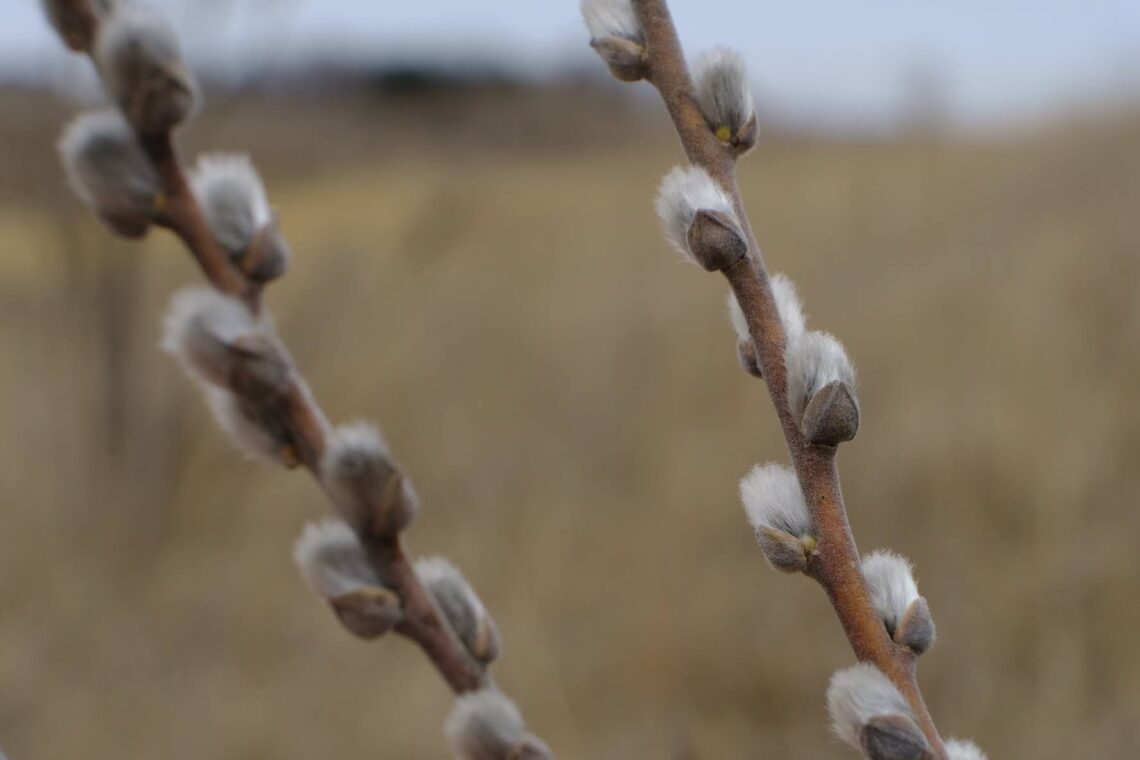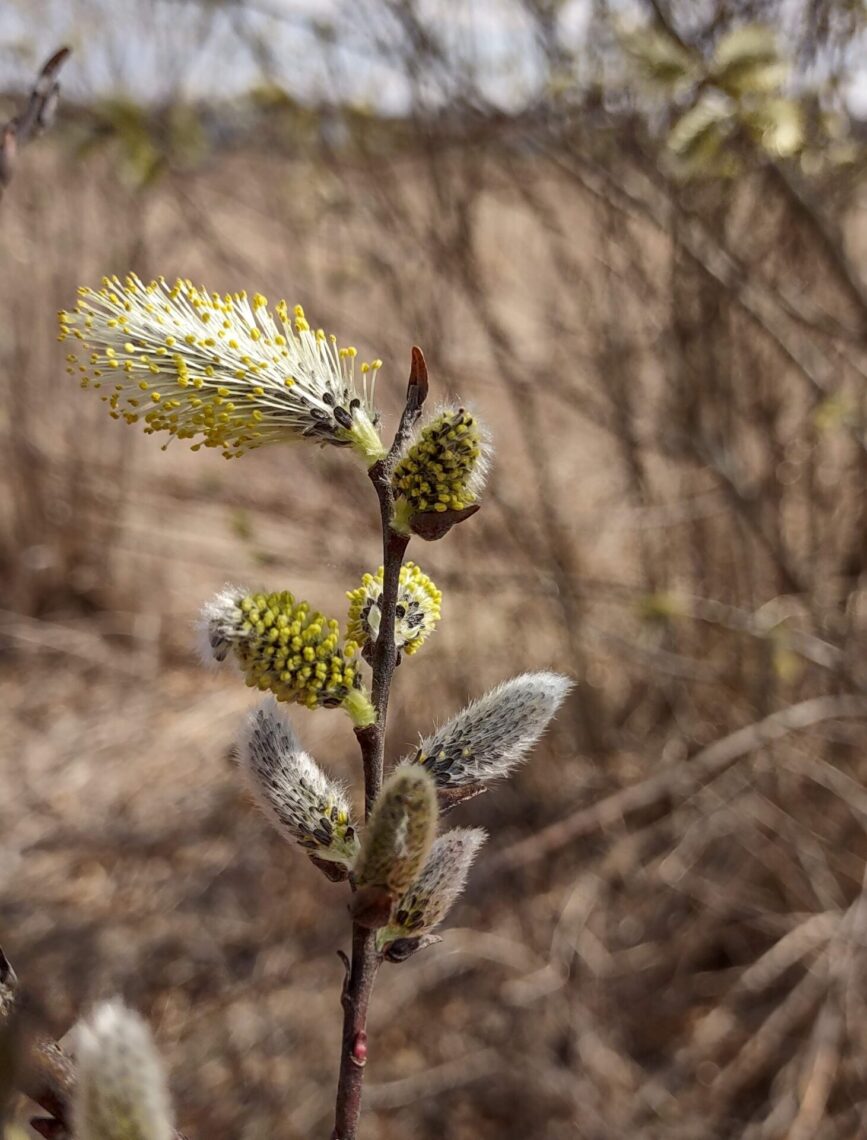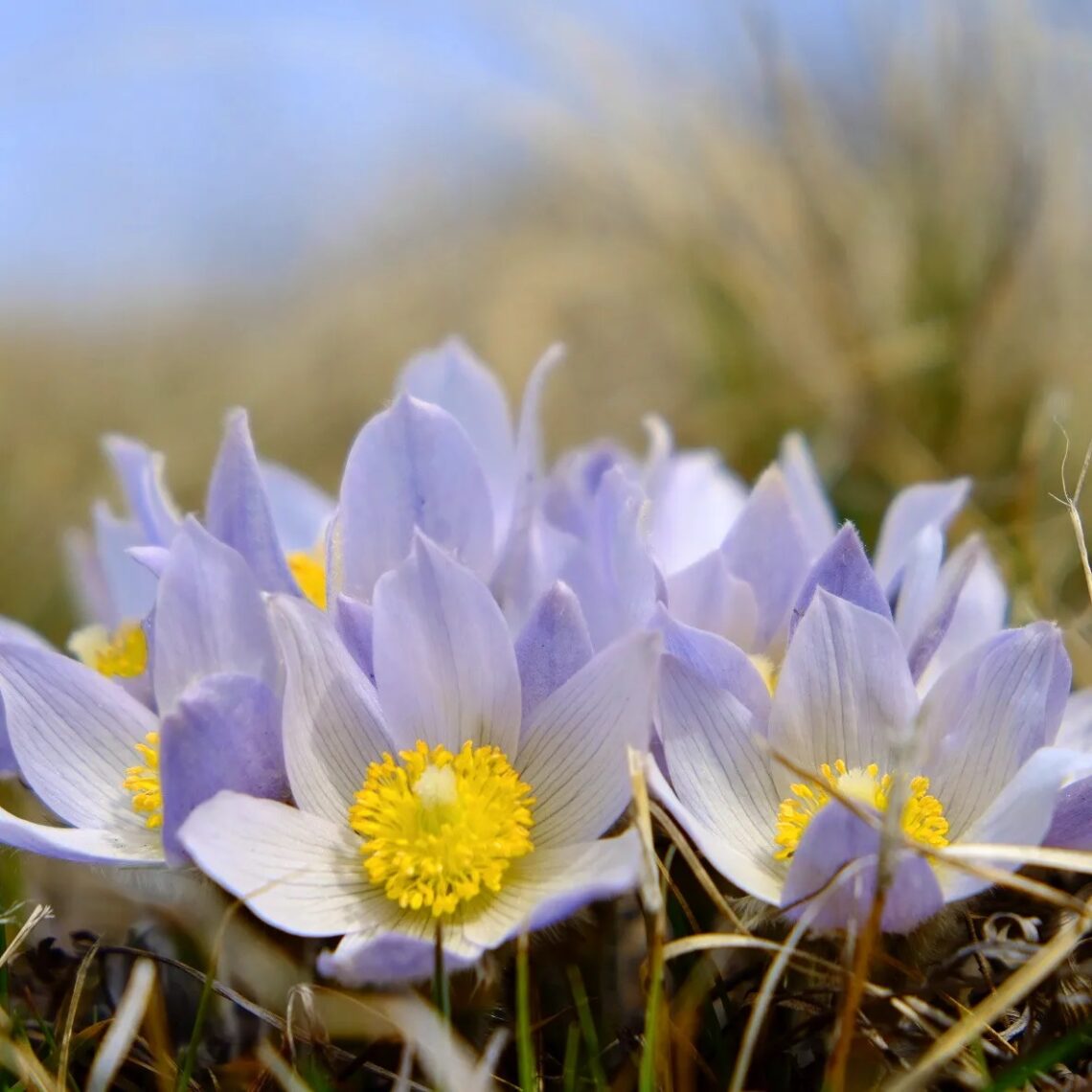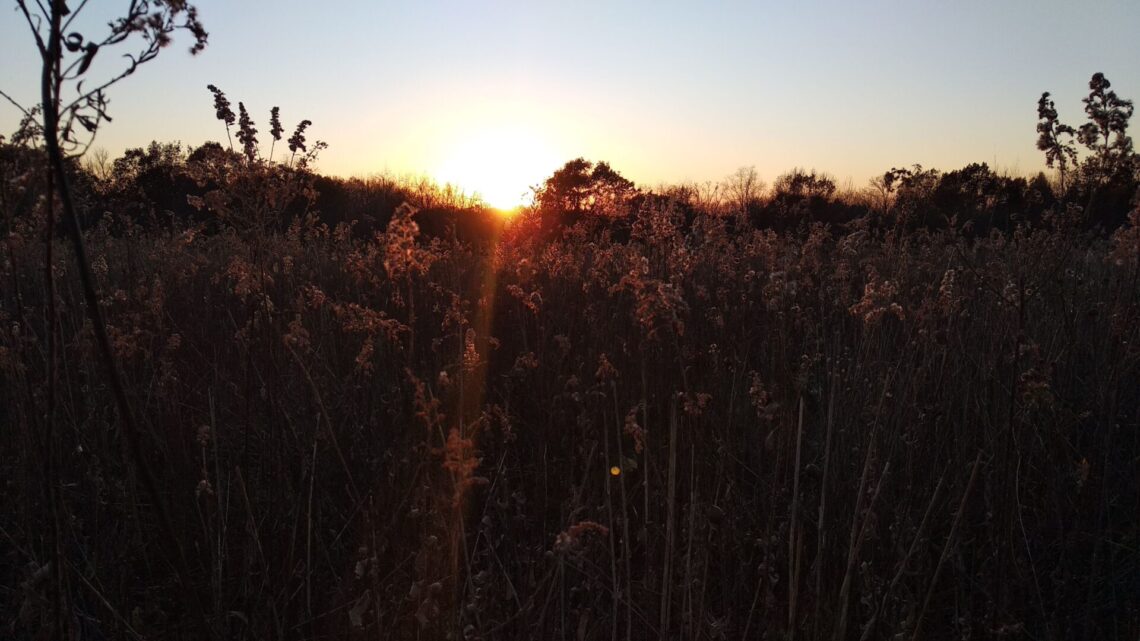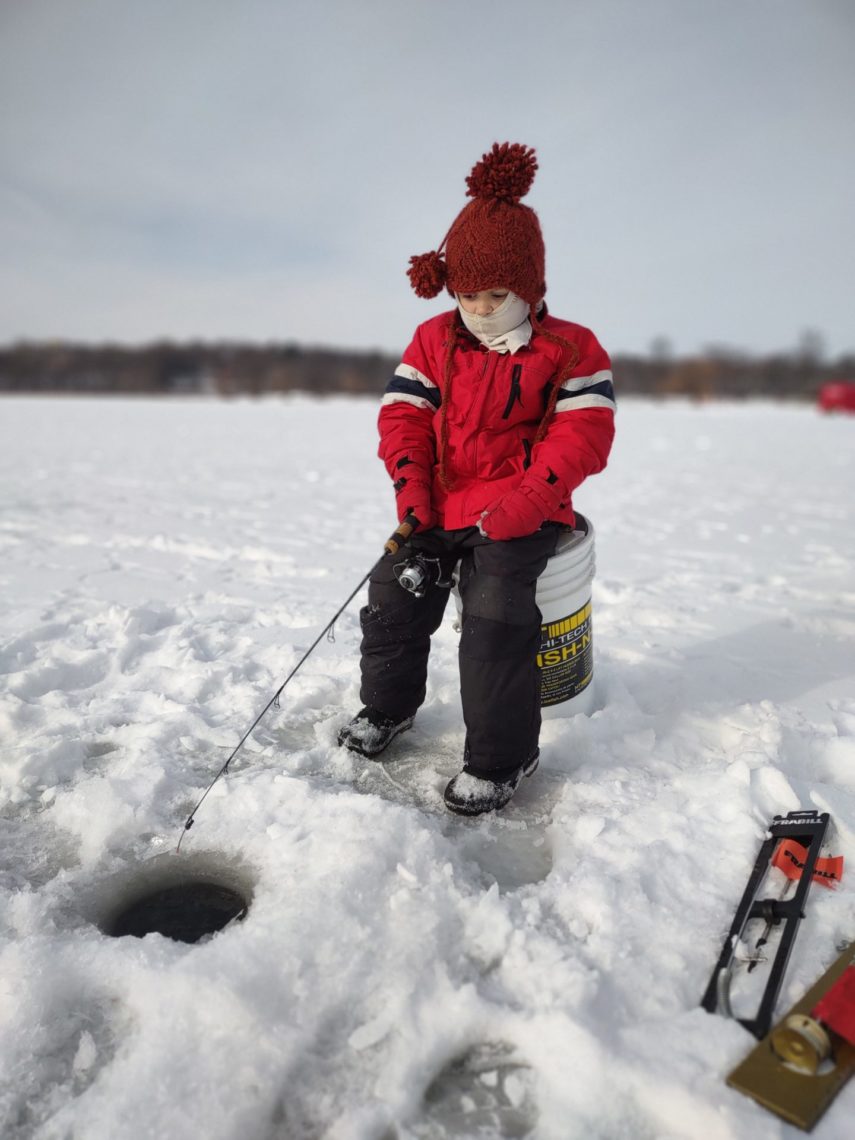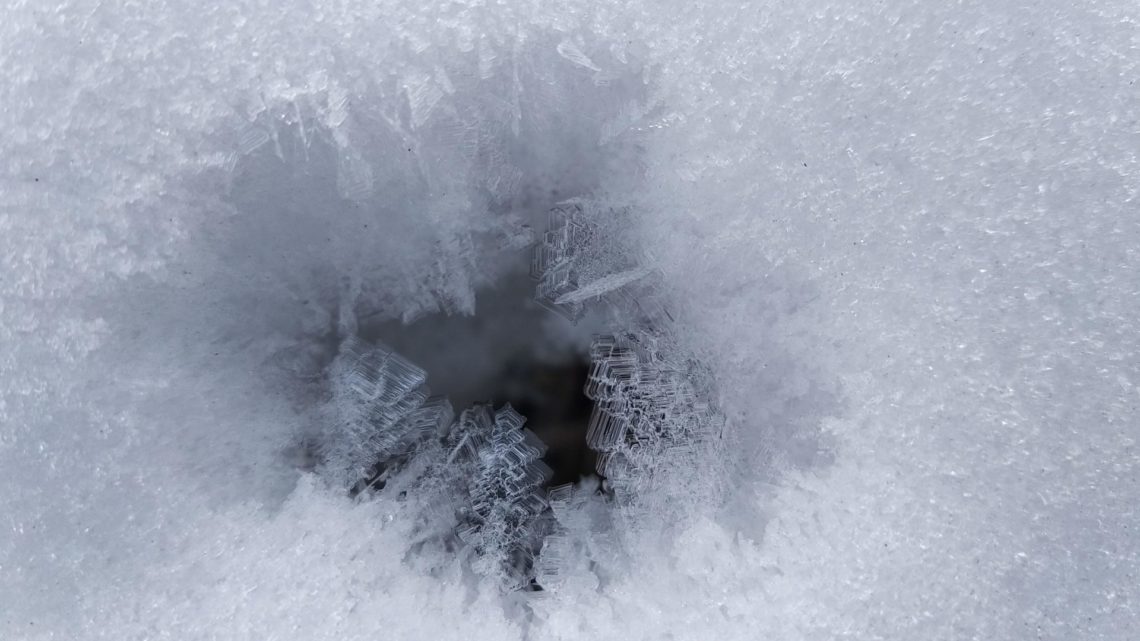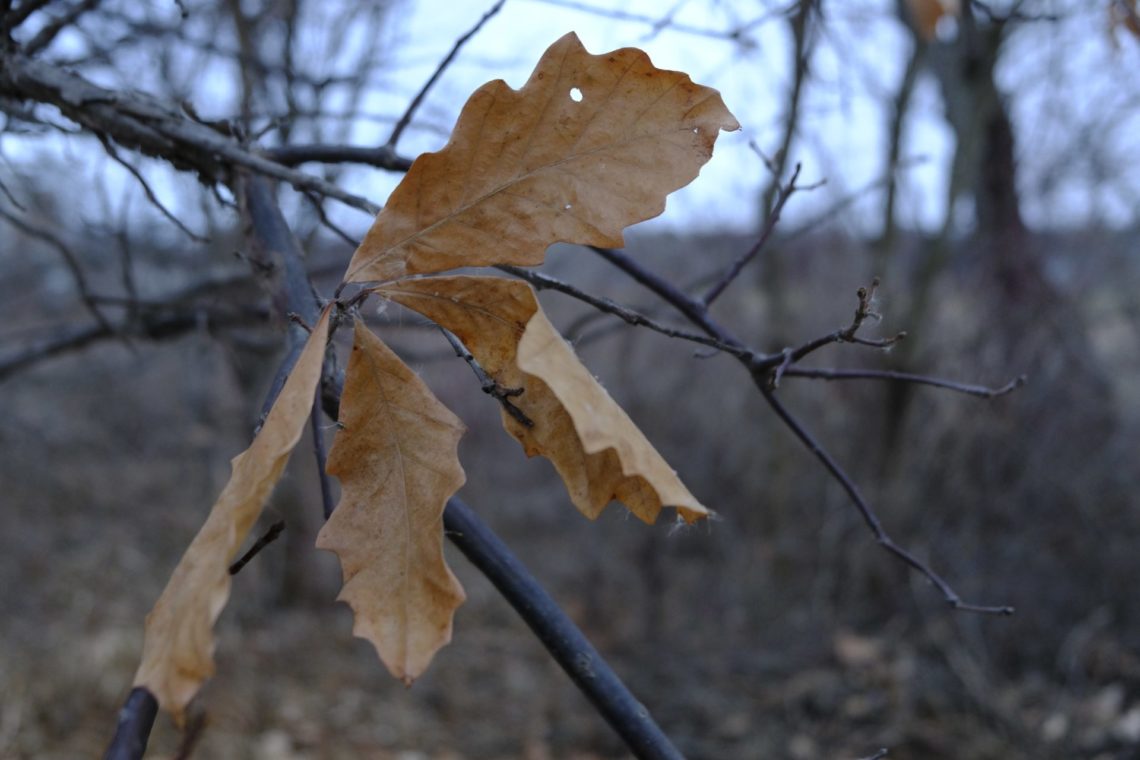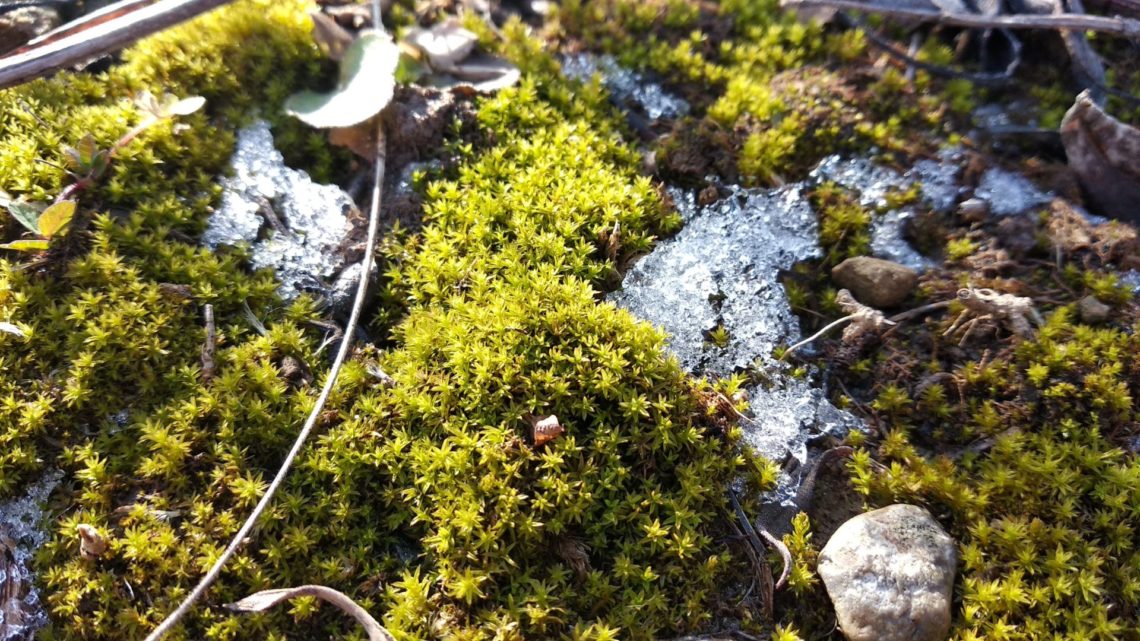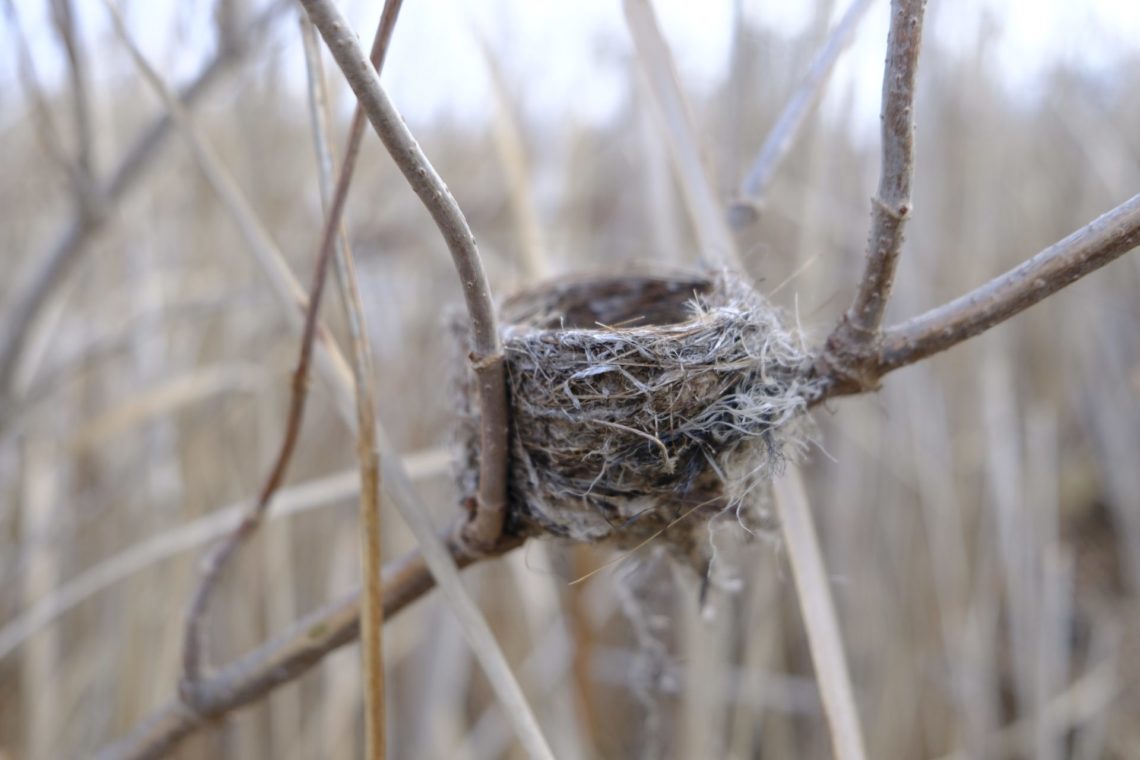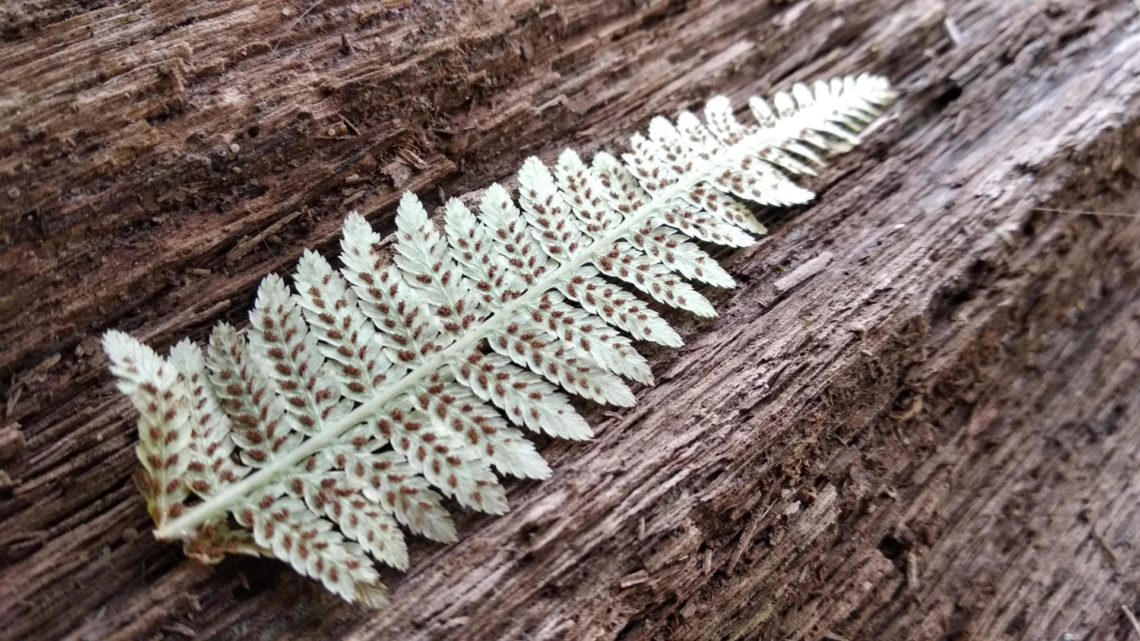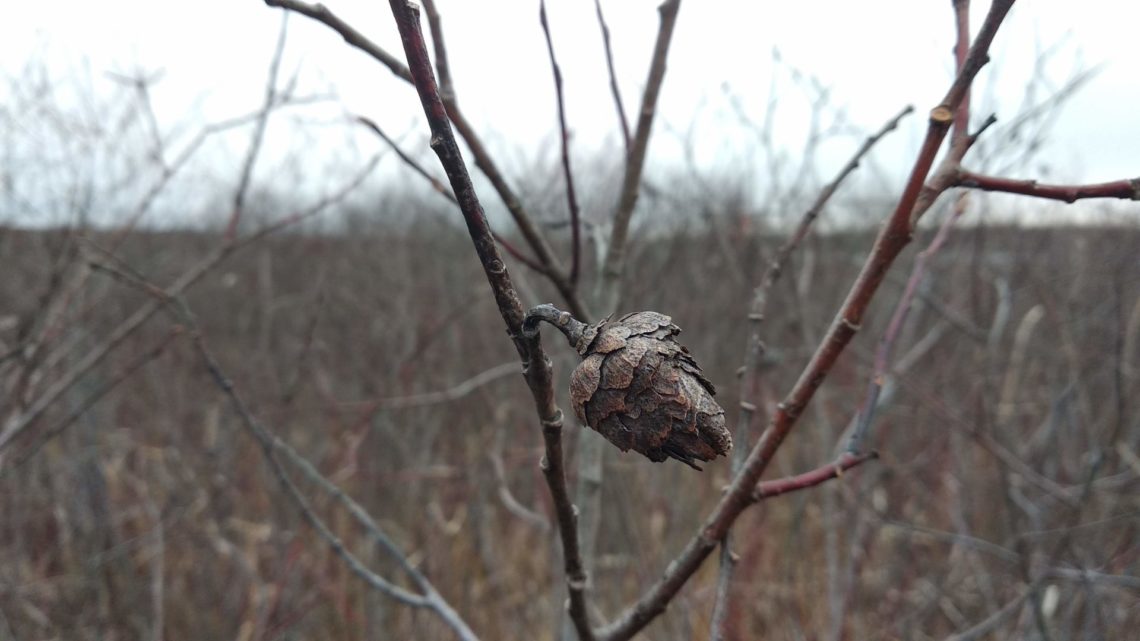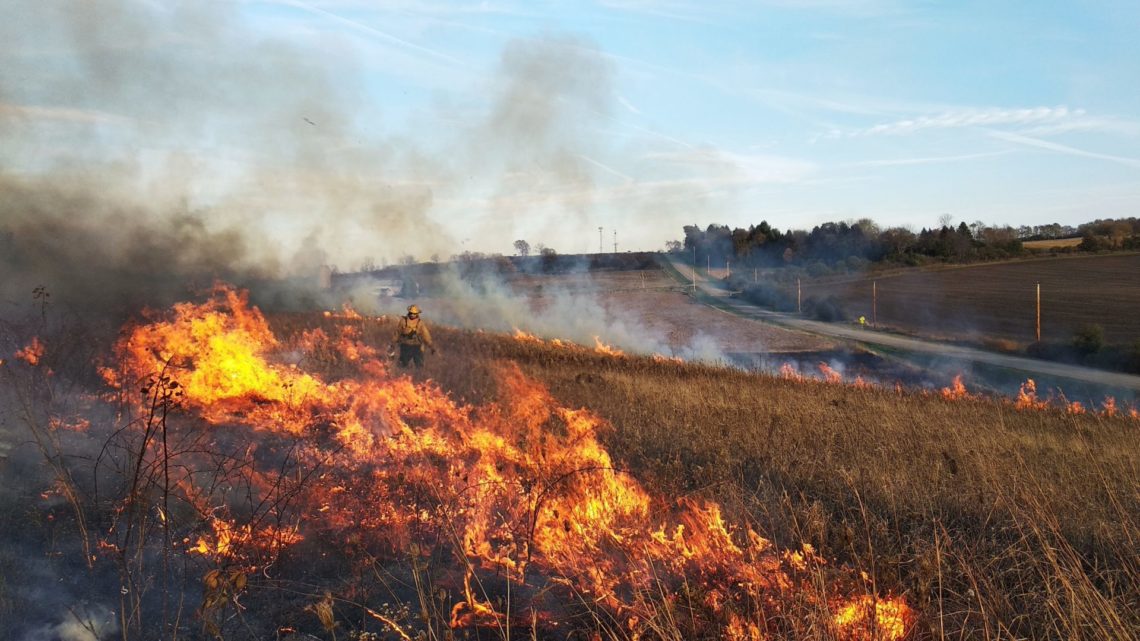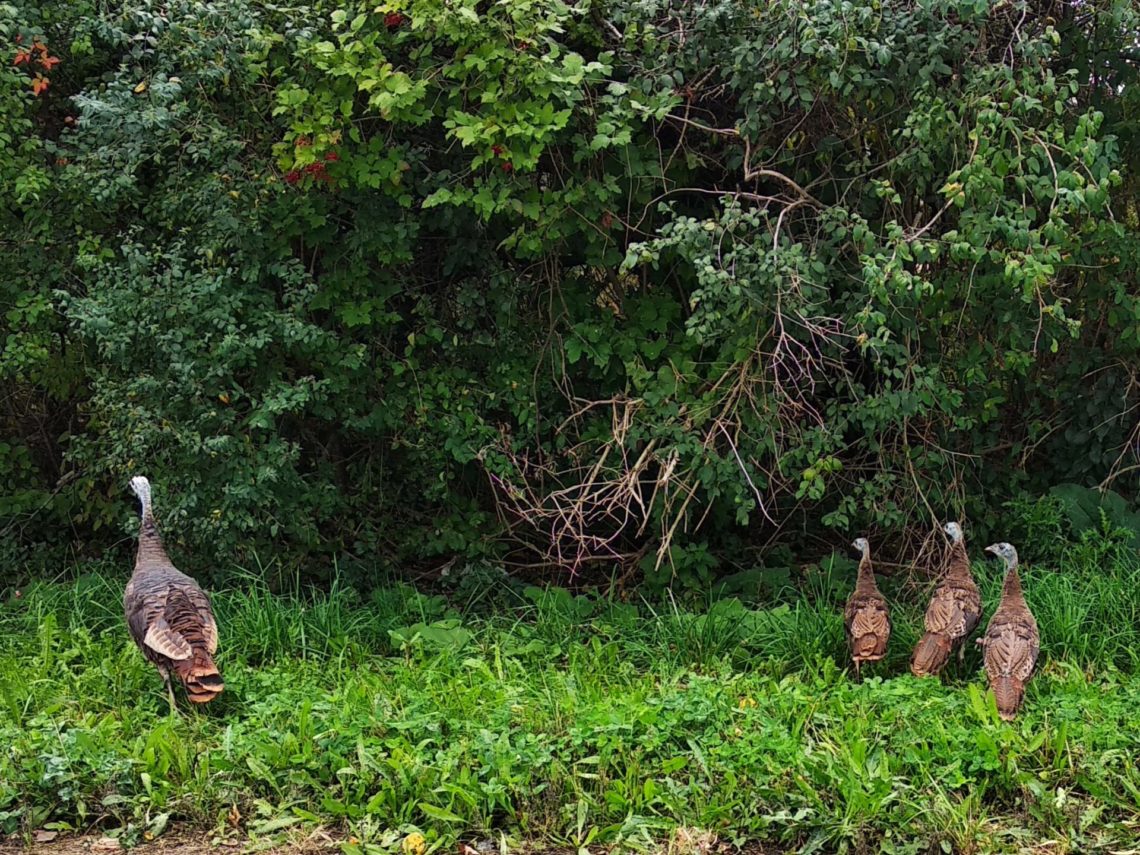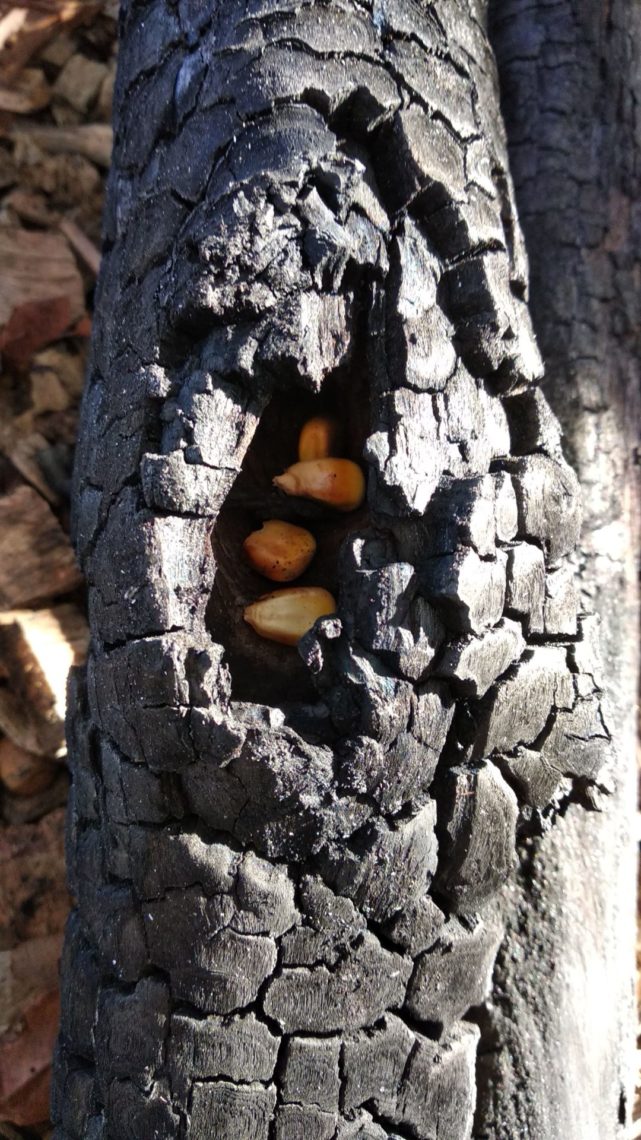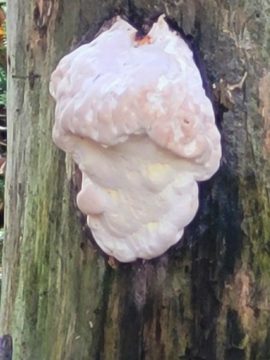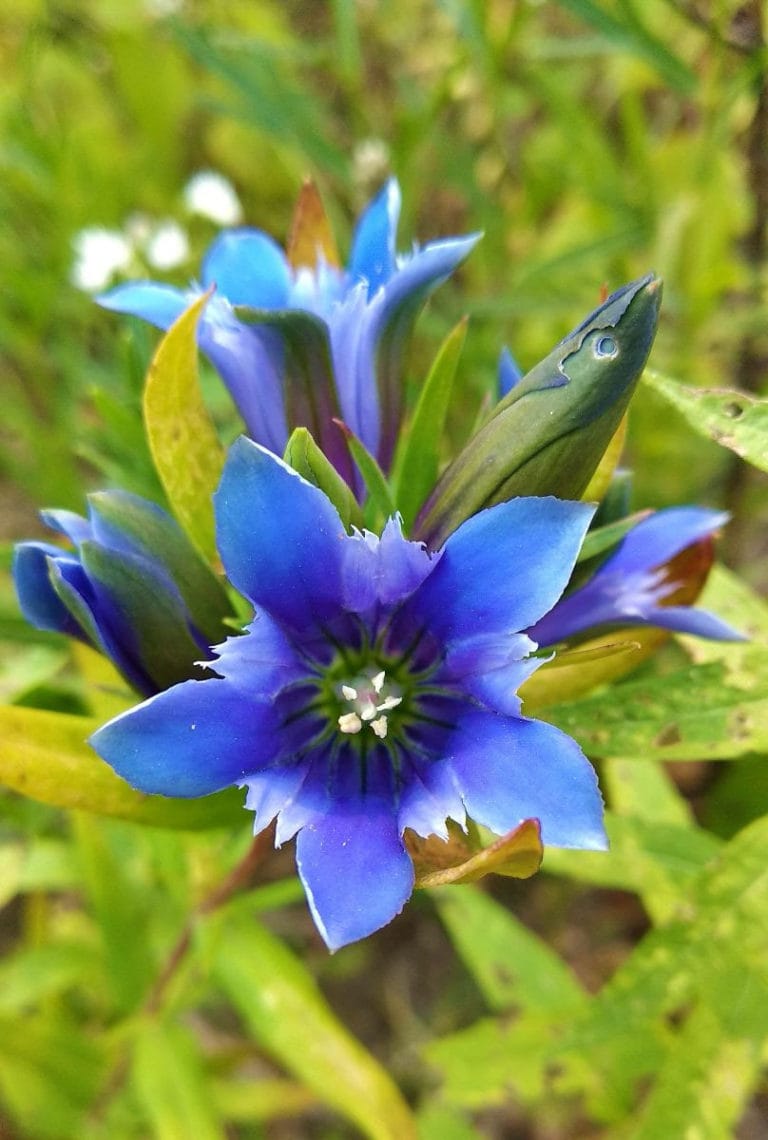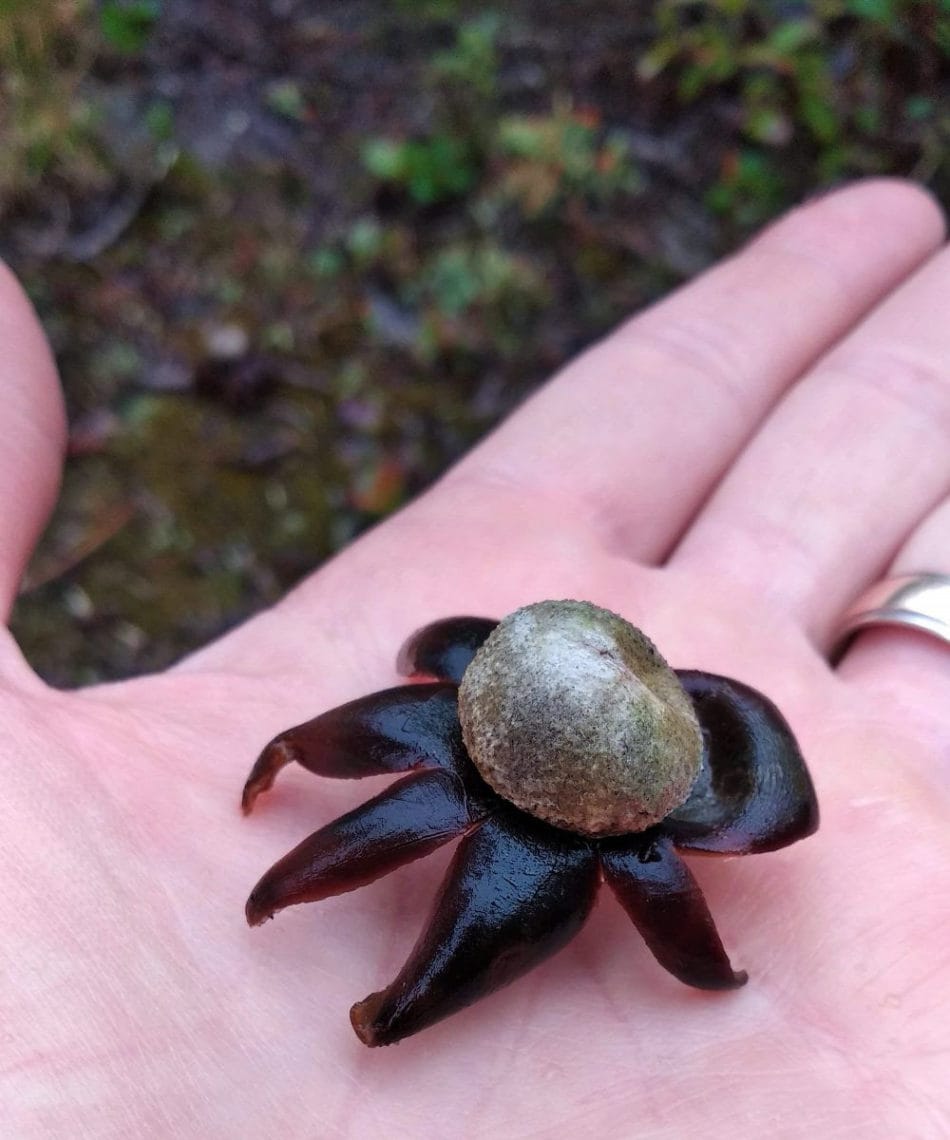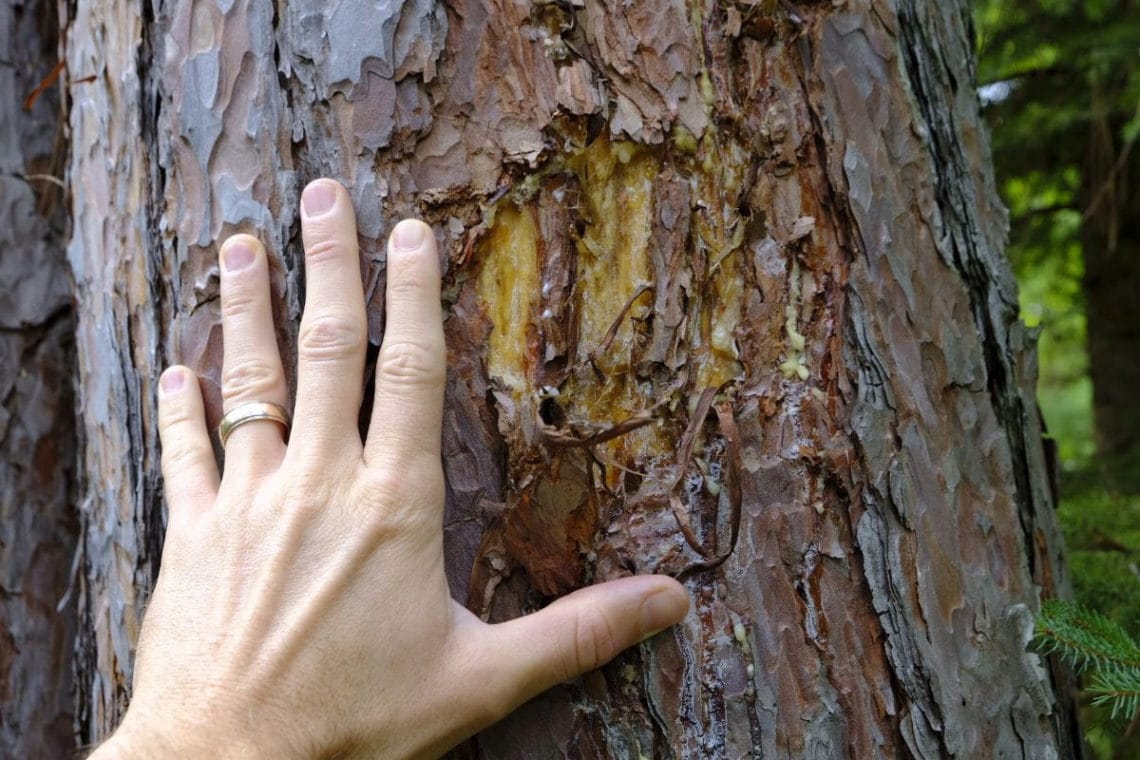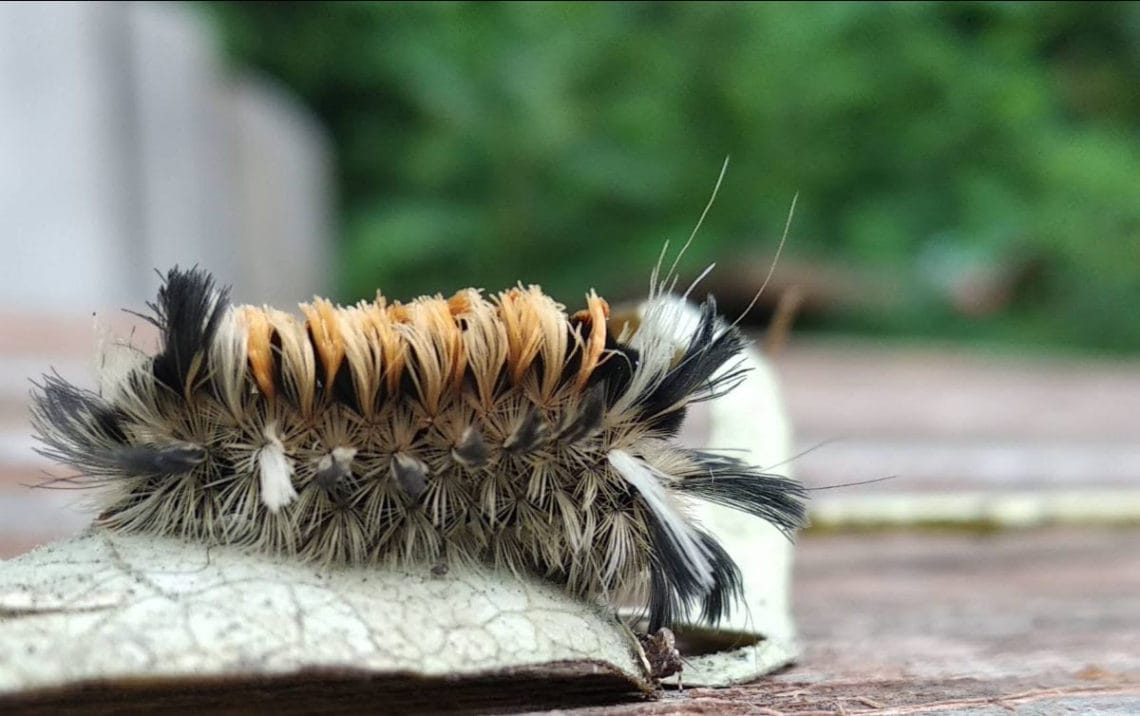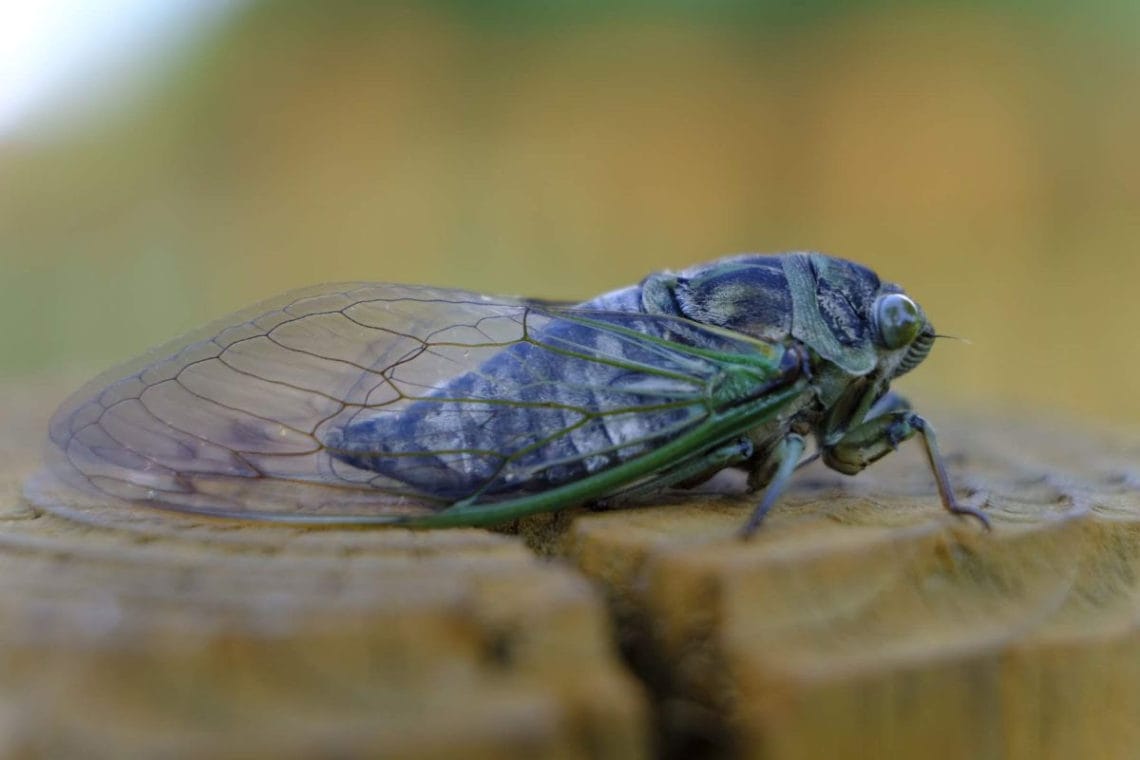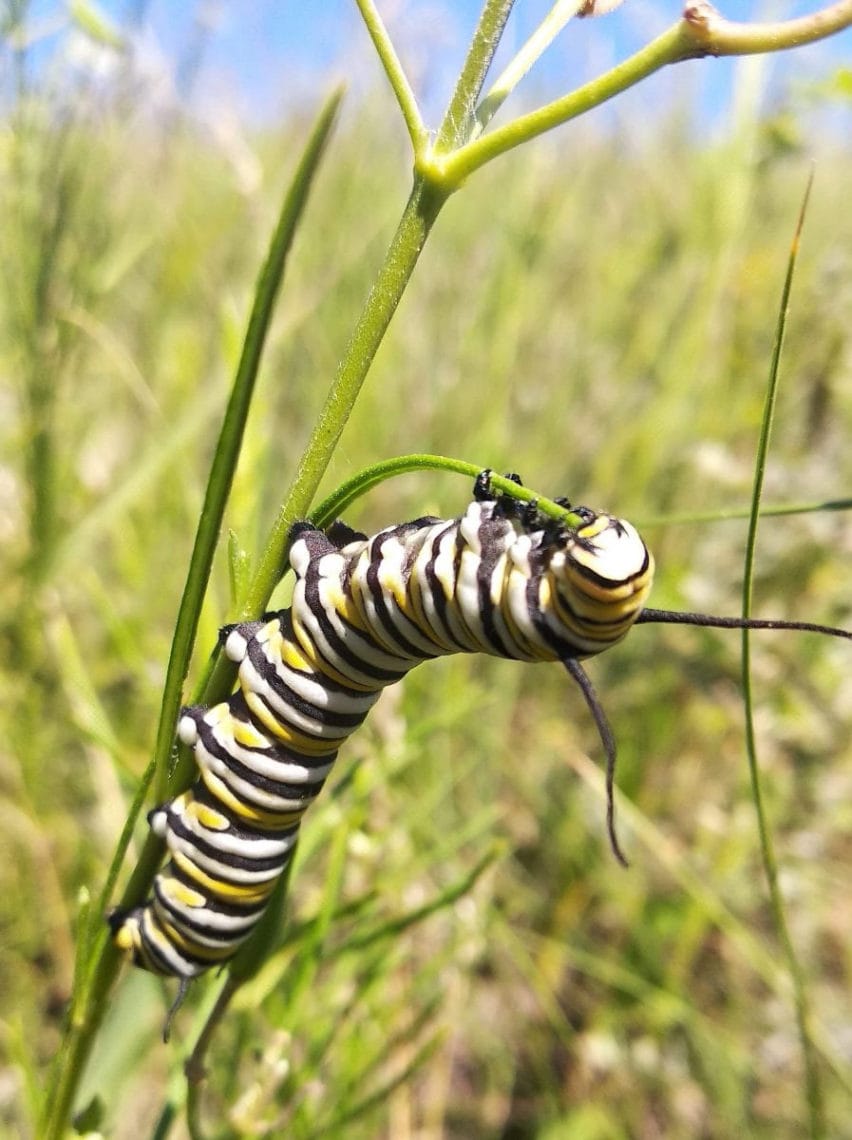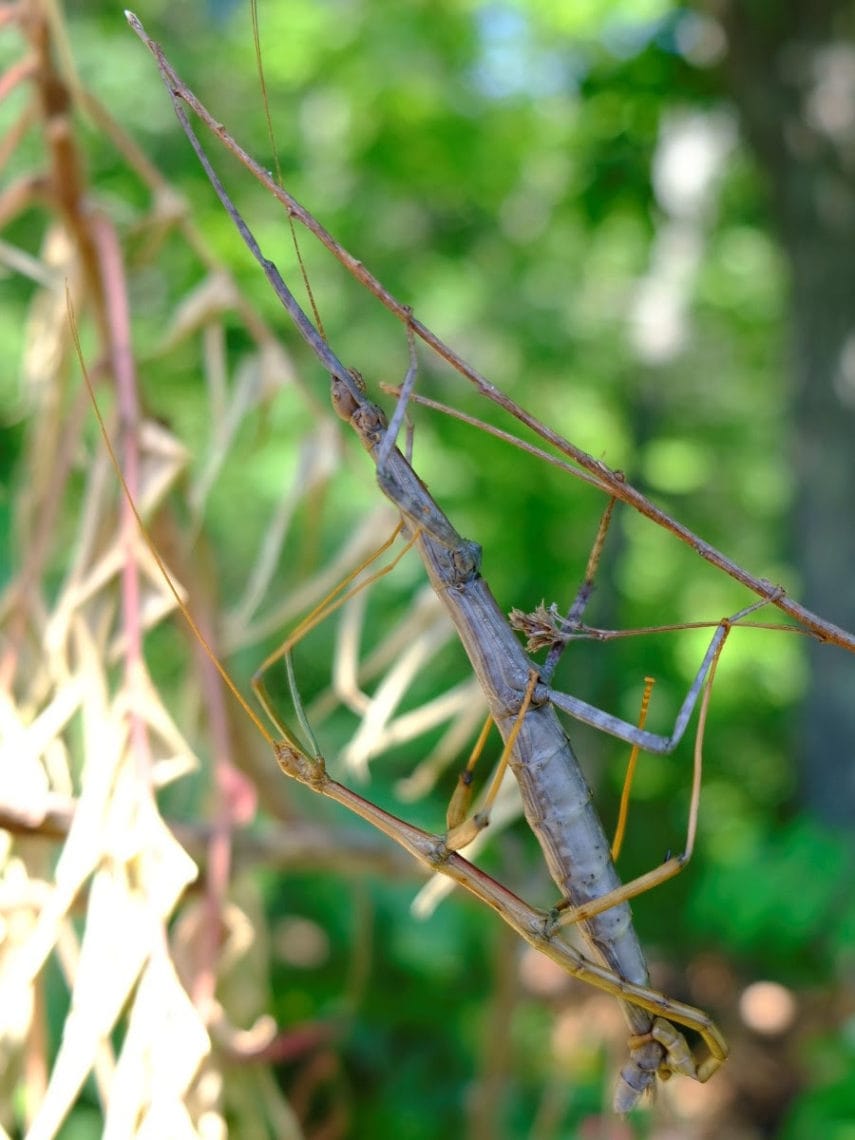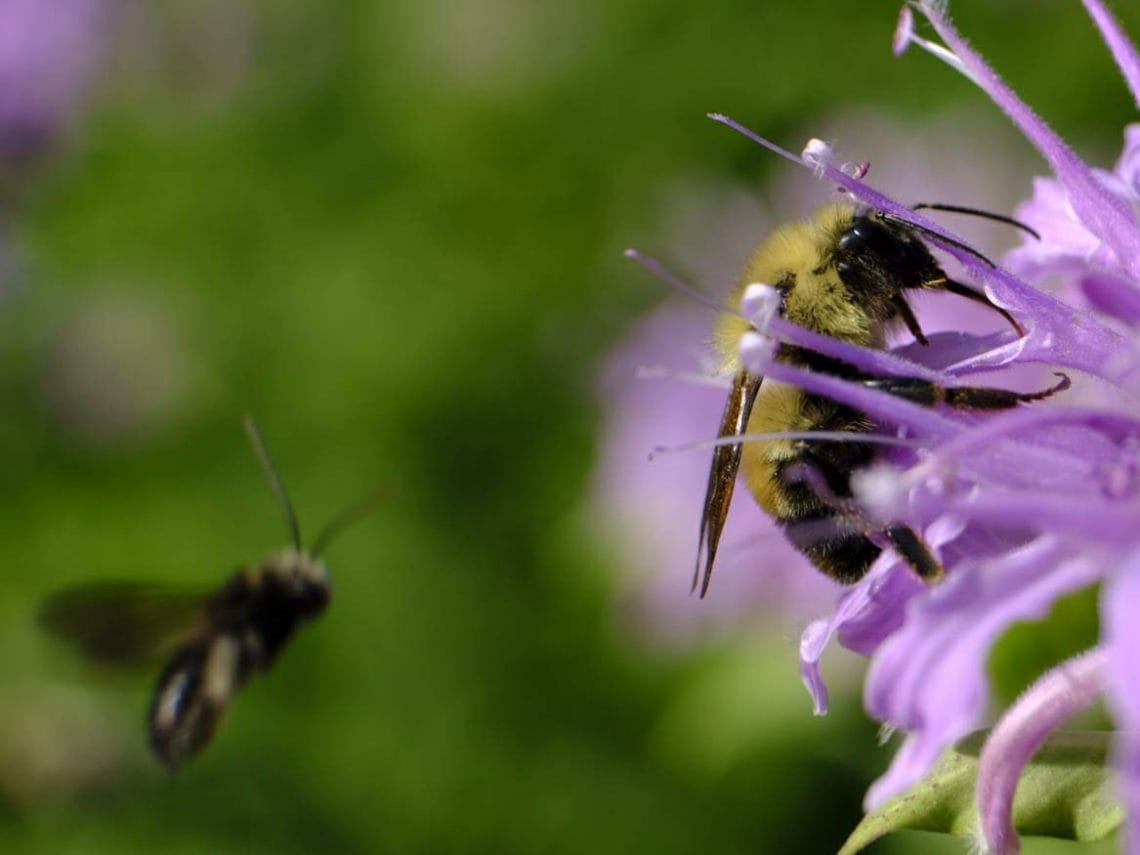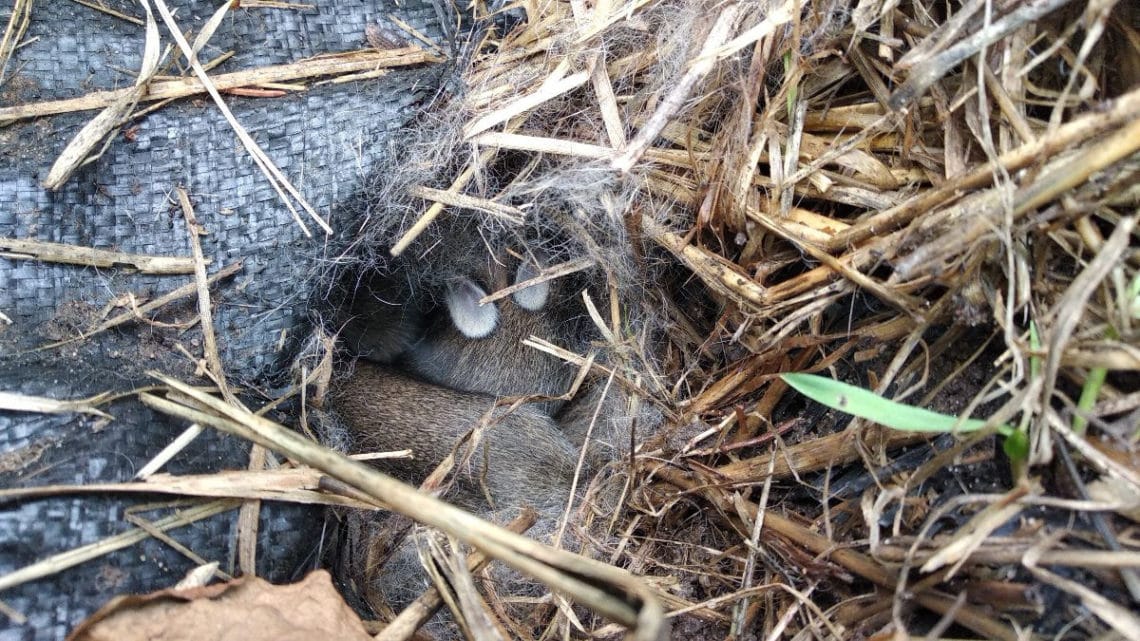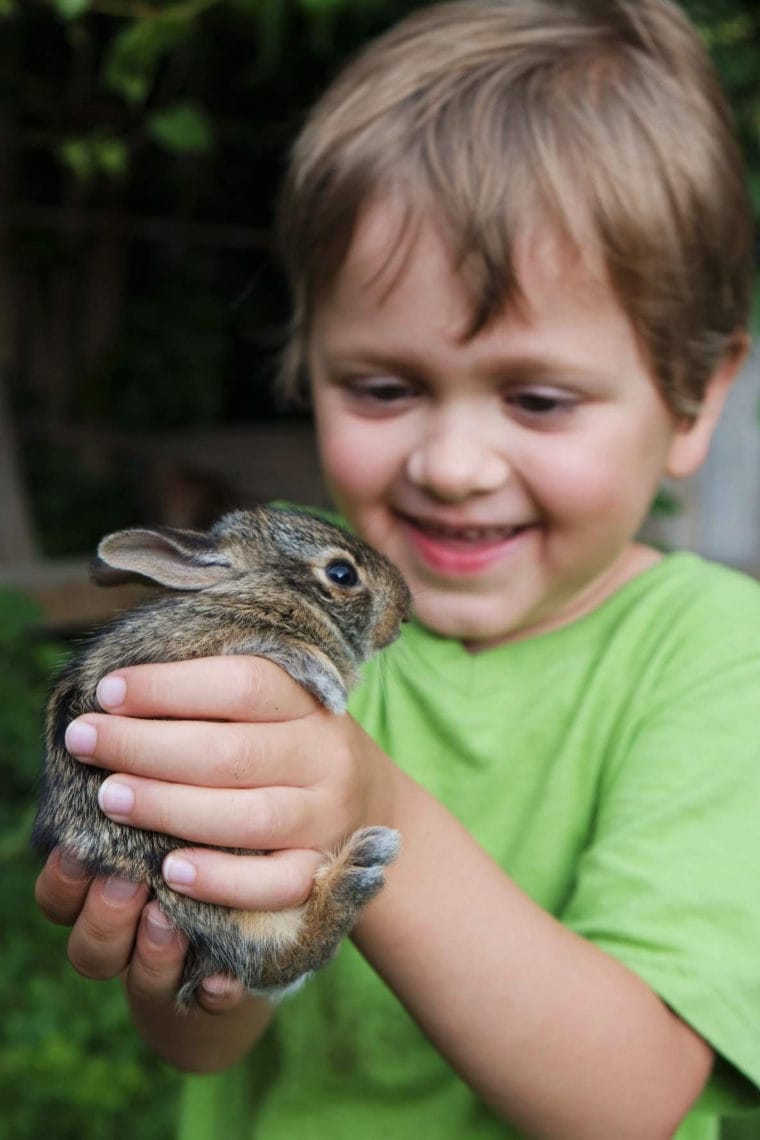What an odd spring we’ve been having lately! While the snow appears to be in our rearview mirror, the cold seems to be sticking around. Mix that with all of the rain and high winds, it almost seems like Mother Nature is toying with us and tossing in a 70-80F day every once in a while just to keep us interested.
What I’ve learned is that you need to make the best of what you have. My son for example was playing in our backyard sprinkler last week and if that’s not a glass half full, I’m not sure what is. While it may not exactly be sprinkler weather, there’s plenty of exciting things to see outside this month.
The pelicans are back! This cold wet spring hasn’t stopped migratory birds from making their journey back to Wisconsin. Head out to just about any natural area and you’ll hear and see tons of birds that weren’t here a month ago. I was out at Patrick Marsh a couple of days ago to see if the pelicans had arrived and while they were in small numbers, I was happy to see they were back.
Not only that, my son and I were able to watch them hunt for fish. If you’ve never seen pelicans do this, it’s quite a sight! They all swim alongside one another and then form a quick circle and dunk their heads under water to scoop up fish. It reminds me of synchronized swimmers! Check out this short VIDEO to see what I mean.
It’s not just the birds that are back. Plants are starting to show signs of life as well! Just walking through my neighborhood I’m beginning to see some of the earlier spring flowers popping up like crocuses, daffodils, tulips, and peonies.
While out at Westport Prairie last week, I noticed that prairie willows are even starting to show off their fuzzy catkins. I’m sure you have seen willow catkins in this stage before, but have you noticed what they look like up close when flowering? Take a look at the photo below to see a much further along pussy willow beginning to flower.
Here you can see the process unfolding all on one stem. At the bottom of the plant are the recognizable fuzzy catkins, and as you move up the stem, it’s much easier to see how it changes its form. The yellow you see is pollen and this pollen doesn’t spread via the wind. Instead, willows rely on insects for pollination. Yet another reason to save the bees!
We’re nearing the end of the pasque flower season, but since spring has been pushed further back this year, it’s still possible to get out there and see them before they’re gone for the year. The petals open and close depending on the amount of sunlight available. If you head out on a cloudy day, there’s a good chance that most of the flowers will be closed, but head out on a sunny day and they should look like the photo above.
Well, I hope you enjoyed my virtual tour of nature as it’s happening. However you experience the outdoors or nature, be it physical, virtual, spiritual, or anything in between, I encourage you to do it!
See you next month!
Happy spring! At least I think it’s spring… For the last week or two I’ve been slowly opening my curtains in the morning with my fingers crossed, hoping the ground isn’t covered in snow. While I love a snow-filled winter, I’m ready for it to start feeling like spring.
The days are still cold and cloudy, but if you have been outside lately, you’ll know that nature is beginning to wake up. Let’s take this opportunity to see what sort of changes are going on outside!
The bugling of sandhill cranes can be heard overhead as many of them have begun their migration north. If you visit a local wetland, you may notice Canada geese by the hundreds (even thousands in some places) honking to their heart’s content.
I was recently drawn in to a small vernal pool when on a hike with my family. The sound of chorus frogs filled the air and reminded me that even though it may not feel like it, spring is here! Click HERE to see (and hear) the video I took. The best way to identify a chorus frog by its call is to imagine running your thumb down the teeth of a comb. They sound oddly similar!
If you’re like me, you may be eagerly waiting for plants to emerge from the soil. Some of my favorite plants are spring ephemerals which are some of the first plants to bloom. They have adapted to the cold and low light conditions. Think of bloodroot, trout lily, and Dutchman’s breeches. These are the early plants that bloom before the trees start to leaf out.
While not a spring ephemeral by definition, the plant pictured above is a true harbinger of spring. They are pasque flowers in a very early stage (roughly 1″ tall). Pasque flowers are covered with fine silky hairs to help insulate the plant from cold conditions. In just a week or two, these low-growing purple flowered plants will be in full bloom!
Another less known sign of spring is the emergence of skunk cabbage. It usually pops up in the late winter or early spring while snow is still on the ground. As its name implies, it’s called skunk cabbage because it emits a very unpleasant smell (maybe not unpleasant to everyone). The plant uses its smell to attract pollinators. While skunk cabbage loses its leaves annually, the plant is able to live up to 20 years!
Lastly, if you need a little more proof that spring is actually here (I’m still not entirely convinced), head outside at dusk and if you’re in the right spot, you may hear woodcock peenting. I did this with my family last week and it was amazing!
Male woodcock (also known as ‘timberdoodle’, ‘Labrador twister’, ‘night partridge’, and bog sucker’) can be seen doing their evening spring flights to attract mates. They start by making ‘peent’ sounds from their display area and then shoot upward into the sky (roughly 200-350′) in a wide spiral while making a twittering noise. After about 30 seconds of this, they zigzag back down to the same spot they left from and begin peenting again. Check out THIS video of one calling.
Well, I hope you enjoyed my virtual tour of nature as it’s happening. However you experience the outdoors or nature, be it physical, virtual, spiritual, or anything in between, I encourage you to do it!
See you next month!
It’s been an odd winter to say the least. One day it’s -10F outside with 20mph winds and the next it’s 51F and sunny. To follow that, we experienced a ‘snow squall’ this week which lead to some pretty intense ice. I don’t know about you, but when the weather behaves so unpredictably, it often leaves me feeling a bit uninspired to go outside. It’s harder to plan outdoor adventures and leaves me in a bit of a nature slump.
It happens! These slumps provide a great opportunity to reset and start daydreaming about what’s around the corner. While I probably stayed inside more this month than any other month in the last year, I did manage to sneak away on a few nice days to spend some quality time outside. So with that, let’s see what’s happening out there!
When it’s the middle of winter and there’s a nice sunny day without a lot of wind in the forecast, I like to try and get out on a frozen lake. This time of year, many of the lakes are still frozen over, but always be cautious while out on the ice and look up ice reports before going out.
Recently, I went out ice fishing with my family and caught some of the smallest bluegill I have ever seen in my life. While they were tiny, they were plentiful, and that makes for a great evening on the ice. My son likes to kiss the bluegill he catches on the lips before returning them to the water. It’s something he’s always done and it cracks me up every time.
While out at Patrick Marsh, I came across some very tiny tracks in the snow (pictured above). It appeared that whatever made the tracks were jumping like a kangaroo with both feet planted before leaping. You can also see a very thin line in the snow behind these footprints. That thin line is the critter’s tail hitting the snow as it lands.
If you haven’t guessed it yet, the tracks definitely belong to some sort of rodent. Wisconsin has a few rodents that leave similar tracks so it’s very hard to identify them down to a species (at least for me). My guess is that it’s likely a meadow vole. I’ve seen loads of meadow voles out at Patrick Marsh and have even caught a couple while doing restoration work in the summer.
I ended up following the tracks to a tiny hole in the snow (pictured above). It was about the size of a quarter and I noticed that there were little ice crystals around the edge. These ice crystals are referred to as ‘hoarfrost’. This is a type of frost created by air that is brought to its frost point by cooling.
So why was it around this hole in the snow with animal tracks leading to it? Animals that live under the snow in winter stay warm because the snow actually insulates them. As they breathe, the air rises and starts exiting the hole. Once the warm air hits the freezing temperatures outside, it makes this beautiful frost pattern around the entrance. This is an easy way to tell that a critter is actively using their home under the snow!
Lastly, I’ll leave you with this photo that I pulled from the trail camera in my backyard. My wife Carolyn let our dog out late one night about a week ago and noticed movement from our bird feeder out of the corner of her eye. I immediately reached for my trail camera to see what it was and the next morning we discovered that we have flying squirrels that visit our yard! In case you’re wondering, their late night snack was sunflower seeds.
Well, I hope you enjoyed my virtual tour of nature as it’s happening. However you experience the outdoors or nature, be it physical, virtual, spiritual, or anything in between, I encourage you to do it!
See you next month!
It’s a new year which means new adventures await. For many of us, winter isn’t just a time of hibernating and planning for the spring, it’s a time to get outside and enjoy nature. Whether it’s cross-country skiing, snowshoeing, birdwatching, or having evening bonfires, there’s plenty to do this winter!
One of my favorite things to do is search for signs of wildlife in fresh snow. If I’m lucky, I can even snap a picture of the animal tracks before my son stomps through them or makes a snow angel on top of them (he apparently thinks this is hilarious). So with that, let’s get outside and see what we can identify in the snow!
I don’t know about you, but whenever I find tracks in the snow that I cannot immediately recognize, I always jump to the rarest creature. For example, I recently found the tracks pictured above and while I felt like I had seen them before, I just couldn’t place them. Naturally, I figured they simply had to be the tracks of a wolverine, fisher, porcupine, or even baby Sasquatch.
There’s something exciting about not being able to identify a set a tracks because they could have come from anything! Well, not quite but it’s still exciting. So I went home and pulled out my animal tracks and sign book and sure enough, the elusive and rare creature that made the tracks was from an opossum. I confirmed this by posting on the Wisconsin Naturalists Facebook page. This is a great resource that I encourage you to check out if you have nature questions.
When I found the tracks pictured above, what struck me most of all was how jealous I was that whoever made the tracks didn’t sink into the snow like I was. These tracks just looked effortless, like the creature was simply gliding across the snow. Meanwhile, I was huffing and puffing through the snow while sinking in around mid-shin.
Having a dog of my own, I’m pretty familiar with canid tracks. These tracks were a lot smaller than Tucker’s (my black lab), but they have a similar classic dog-like shape. I narrowed it down to fox or coyote and snapped a picture so I could identify it later. I followed the tracks which led me to taking the picture below.
Note how the tracks are no longer gliding across the snow. They actually go quite deep and lead to some sort of hole. If you haven’t guessed it yet, these are the tracks of a hunting coyote. Coyotes have incredible ears and can hear rodents like mice and voles beneath the snow. They tiptoe across the snow with ears pointed down and once they’ve narrowed down the approximate location of the critter below, they pounce! Watch a video HERE of a coyote hunting.
In the photo above, you can see the four feet in the snow (bottom half of the photo) with the two at the very bottom being the coyote’s back feet. Note how much deeper they are than the front feet. These deep impressions are created from the jumping motion and the hole at the top of the photo was where the coyote landed. So cool!
Well, I hope you enjoyed my virtual tour of nature as it’s happening. However you experience the outdoors or nature, be it physical, virtual, spiritual, or anything in between, I encourage you to do it!
See you next month!
Happy first week of winter! This is usually the time of year when I picture the landscape to be covered in snow and my windshield covered in ice. While I’m sure there are many who are glad that the snow has held off as long as it has, I would settle for a light dusting right about now. For me, snow makes it seem less cold outside. I’m not sure why, but when it’s 25F with no snow, it just seems so much colder.
While we all begin our own hibernation and settle in for winter, let’s see what’s going on outside.
Have you noticed that oak and beech trees tend to lose their leaves much later in the year than other tree species? It could be January or February and somehow these trees are able to retain their leaves, which is incredible!
Scientists call this retention of dead plant matter ‘marcescence’, and there are a few theories as to why it happens. One theory is that it deters critters like deer from feeding on the buds below the leaves. This gives the tree an advantage in the spring since it has more buds available for growth. Another popular theory is that the trees retain leaves all winter to slow decomposition of the leaves. Once spring arrives and the leaves fall, it provides nutrients (like compost) to the soil at a time when the tree needs it most. Especially oaks and beeches, which tend to grow in drier and less nutrient-rich soil.
The next time you’re out in a damp wooded area, keep an eye out for various species of moss. I often find them growing on rocks or on the base of tree trunks. You wouldn’t normally think winter would be a good time to find moss, but did you know that it can photosynthesize all year long? Depending on the depth of the snow, moss can even photosynthesize under the snow!
Now that most of the leaves have fallen, this is a great time of year to go nest searching! The sheer number of nests that I notice when out on hikes always amazes me this time of year. Some of the easiest nests to find are those that previously belonged to robins and goldfinches since they tend to nest closer to the ground than many other species.
The nest pictured above was created by a goldfinch (I believe). They’re usually pretty small (2-3″ diameter) and are almost always constructed high in a shrub where 2-3 branches intersect. If you find a bigger nest that was built using sticks and mud, that’s a good indication that a robin made it. Both types of nests are extremely durable and can often remain intact all winter long.
Similar to the oak leaves that manage to hold on all winter long, various tree and shrub species are able to retain berries throughout the winter. This is great news for cedar waxwings who feast on berries all year long. An interesting fact that I just learned is that brown-headed cowbird chicks that are placed in cedar waxwing nests often have a very difficult time surviving because of the berry-heavy diet provided by the cedar waxwing mother. Waxwings really do love berries!
Well, I hope you enjoyed my virtual tour of nature as it’s happening. However you experience the outdoors or nature, be it physical, virtual, spiritual, or anything in between, I encourage you to do it!
See you next year!
The leaves are falling, the days are getting shorter, and the temperatures are finally starting to drop. For many, these changes signify a new chapter of the year. A chapter filled with watching football, hanging out with family, or even sitting in a tree and hoping a deer walks by.
For me this time of year is an exciting one, especially if you’re outside. Right now is when prescribed fires and prairie plantings are happening. It’s also just a great time to get outside and explore. There’s a lot more going on out there than it seems. So stop raking leaves for just a minute, and join me on a quick tour of what’s happening outside!
I will often head out for a hike with the goal of reaching a destination. Maybe that’s hiking to the end of a trail, finding the top of a bluff for a nice view, or racing back to the car because I forgot the snacks for my four-year-old in the back seat. While these are (mostly) great hikes, I find that I enjoy the slower hikes best. The ones where you stop and just look around for a while.
Last week I did just that when I found this milkweed seed (pictured above) that flew right into me. I stopped to look at it and was floored by how pretty it was. The way the fluff moved with the wind and how the seed blended in with the surrounding oak leaves. It was perfect, and I hope it made it to wherever it was heading (before I got in the way).
Despite the cold weather, you still might find ferns scattered around that do not seem to be phased by the temperature. I recently found this fern, which I believe to be a ‘lady fern’ on a hike. Since it was one of the few plant species that was still green, I went to go check it out and discovered hundreds of tiny spots on the underside.
These spots are tiny spores that get released to help the plant reproduce (sort of similar to mushrooms). This is one of the ways ferns reproduce since they do not produce flowers or seed. Ferns can also reproduce underground through rhizomes. It might be too late this year, but the next time you find a fern, check out underside of the frond to see these beautiful cinnamon-colored spores.
Have you ever seen something that looks like a pinecone, but it’s on a tree that is very clearly not a pine tree? If you have, you were probably looking at a type of alder. Alders are one of the few tree/shrub species that have leaves which do not change colors in the fall. They remain green until they fall off.
Once the leaves fall off, it’s much easier to notice the odd pinecone-looking things attached to the stems. They are in fact cones, and they work very similar to those you would find on a pine tree. Inside the cone are lots of little seeds that emerge from the cone to help it reproduce.
Lastly, I’ll leave you with this photo of a prescribed fire out at Westport Prairie (above). I recently had the privilege of helping out with this prairie fire that warmed me up on a pretty cold day.
This is one of the best management tools you can use to help keep prairies and oak savannas thriving, and is a common sight this time of year. The native plants have evolved with fire throughout the years and have deep roots that remain unharmed from the heat of the fire. This differs from the weedy shrubs and saplings that have shallow roots which get roasted by the flames. When spring arrives, the ground will be charred black which allows the ground to warm up quicker and gives the prairie plants a head start for the year.
Well, I hope you enjoyed my virtual tour of nature as it’s happening. However you experience the outdoors or nature, be it physical, virtual, spiritual, or anything in between, I encourage you to do it!
See you next month!
Happy almost Halloween! The leaves are falling, porches are filling up with jack-o-lanterns, and children everywhere are about to get their sugar fix. I can remember using a large pillow case as my trick-or-treat bag as a child. I never came close to filling even 1/8 of it, but oh how optimistic I was. Now that I have a four-year-old of my own, I cringe at the thought of him eating that much candy… I suppose it’s okay, as long as he saves me a few Reese’s PB Cups.
While many of us are preparing for fall festivities, let’s take a quick peak at what’s happening out in nature!
This time of year you may see wild turkeys across the landscape. I see a lot of them along forest edges and harvested agricultural fields. If you’re real lucky, you might also see a hen with her young. I snapped this photo the other day while driving to Westport Prairie. The turkey family was crossing the road and weren’t nearly as shy as I thought they would be.
Hens will often begin building nests in April and will start laying eggs in May. They usually lay around 12 eggs (1 per day) and the chicks (called poults) hatch in early/mid-June. Hens will take care of their young through the fall until they venture off on their own.
While cleaning up some fallen brush, I noticed a charred log that had a flash of yellow on it. Upon closer examination, I noticed that there were four unharmed corn kernels inside of a small hole in the log. It’s fairly obvious that this was the work of a squirrel caching food for the winter. What’s less obvious is that this squirrel may have been attempting to make popcorn in the woods…
Recently, while volunteers were helping construct a boardwalk at Patrick Marsh for a local Girl Scout project, we discovered this little treefrog in the vegetation. It’s a surprise to many that Wisconsin actually has two species of treefrog. This species, the Eastern gray treefrog lives in and around wetlands and has the ability to change its skin color depending on the temperature.
This time of year, treefrogs are getting ready for winter. Did you know that as the temperatures drop, treefrogs (as well as many other amphibians) increase the amount of glycerol in their tissues? Glycerol is a type of alcohol with a lower freezing point than water, which acts as an antifreeze for the frogs. Resting in a semi-frozen state under the snow isn’t how I’d like to spend my winter, but I’m glad it helps keep our frogs around!
| I’ve been receiving a few emails lately about giant puffball mushrooms out at Patrick Marsh, so I had to take a trip out there to find them myself. They weren’t hard to miss… I’ve seen plenty of these in the past but none this large. It honestly looked like someone left a bunch of volleyballs in the prairie. I’ve read that they are edible if you can harvest them at the correct time, but definitely do your research before eating any mushrooms you find in the wild. |
|
Happy first official week of fall! While I’m excited for cooler temperatures, colorful leaves, and apple picking, I feel like I’m not quite ready for summer to be over. Neither are the last of my almost ripe tomatoes desperately clinging to their vines in my garden!
The transition from summer to fall is always an interesting time of year, so let’s see what’s happening outside as our days slowly get cooler and shorter.
This time of year goldenrods and asters are in the spotlight. Their gold and purple colors can be seen carpeted across natural areas. While these late summer and early fall flowers can be breathtaking, one of my favorites that blooms this time of year is downy gentian (pictured above).
You’ll need to search in drier soils if you want to find downy gentian. It also helps to have a nice sunny day since these flowers close up in the evening when it cools down and when it’s cloudy. The deep blue-violet color is enhanced even further with the brownish green vegetation that surrounds it.
This time of year, insects are still very plentiful. A lonesome monarch might be found flitting around, bees can be seen napping in flowers, and crickets are still filling the evening air with song. On a recent hike out at Westport Prairie, my son Jay found this terrifying creature (pictured above).
I have to admit that I was too scared to pick up an insect with what looks like an enormous sewing needle on the back end of it. Without hesitation my son picked it up and put it on his shirt while walked around looking for flowers (I’m not sure where he gets that from).
The bug was a straight-lanced meadow katydid (very fitting name) which we later identified at home with our insect identification book. Apparently, the ‘lance’ is an ovipositor making this particular insect a female. She uses the ovipositor to help bury her eggs in the soil. I’m less scared now, but still not picking it up.
I recently took a trip up north with my family and we went on a few hikes like we usually do. On one of the hikes, we found this odd alien-looking thing next to a log. I figured it was a mushroom of some sort, but I’m terrible at identifying mushrooms so I took a picture of it and uploaded it to my nature identification app. The app said it was a crab… It was very much NOT a crab, so I did more research (here’s a friendly reminder to not always trust your app).
It turns out that it was a hygroscopic earthstar. Aside from being a great band name, hygroscopic earthstars are a type of mushroom that open up with increased moisture in the air (and close when it’s dry). When opened, raindrops land on the round center ball of the mushroom, causing puffs of spores to come out. The ‘legs’ even curl under the mushroom to elevate it off of the ground so that spores can be swept away with the wind. HERE is a time-lapse video of one opening and closing.
|
|
When I ask others how their summer is going, I get a lot of responses about the number of insects, or lack thereof (does this only happen to me?). Many people have noticed that they haven’t been spending their summer swatting at mosquitoes. The populations are down this year and it’s likely due to the long, cool spring we had. Others have commented that firefly numbers seem to be down while ticks are on the rise. Since insects seem to be all the buzz lately, let’s talk about bugs you might see if you went outside right now!
If you have ever watched the Addam’s family, you might be reminded of Cousin Itt when looking at this interesting little caterpillar. They’re called milkweed tussock moth caterpillars and as their name implies, they feed on milkweed. Milkweed is filled with toxic chemicals that most critters cannot consume. These caterpillars however, have adapted to the toxins which actually help them against predators.
Scientists have discovered that many insects that feed on milkweed are often a reddish orange and black color (like the monarch butterfly, red milkweed beetle, and milkweed tussock moth). Several bird species that primarily eat insects tend to stay away from insects with these colors because of how unpalatable they are.
As I type this nature update, I can hear a cicada screaming outside of my window. Depending on the time of day/night you read this, you may also hear one. The cicada you hear may be really far away if it sounds faint, but because they can produce sounds over 100 decibels, there’s a good chance you won’t have to go far to hear one. Other sounds over 100 decibels include motorcycles, chainsaws, and car horns. I had a couple fly right by my head at full volume while out with volunteers last week, and let’s just say it caught me a little off-guard.
Despite being noisy, cicadas are actually a very interesting insect with a unique life cycle. I encourage you to look up “Brood XIII” as that is the next 17-year life cycle brood to emerge in southern Wisconsin. The last emergence was 14 years ago in 2007, meaning 2024 will host the next emergence. I’m sure there’s a political joke somewhere in there but I’ll leave that up to your imagination.
Monarch caterpillars are munching away! While out collecting prairie seed with volunteers at Westport Prairie last week, we found a few nibbling on some whorled milkweed. We also found some monarch eggs not far from where this picture was taken. It’s always a treat seeing monarch caterpillars out in the field and I often find myself wondering how many wonderful views these little critters will see during their migration.
Lastly, I’d like to leave you with this photo of two mating walkingsticks. I discovered the pair at Devil’s Lake State Park while out on a hike with my family. It was the first time I had ever seen a walkingstick, let alone two of them! The larger of the two is the female and she had to be close to 4″ long not including the outstretched legs and antennae. They were enormous!
Well, I hope you enjoyed my virtual tour of nature as it’s happening. However you experience the outdoors or nature, be it physical, virtual, spiritual, or anything in between, I encourage you to do it!
If you would like to receive these monthly nature updates in your in-box, sign-up for our latest news.
Summer is in full swing and so far I’m enjoying every second of it! Just in my small front yard, bees are buzzing around the bergamot we planted years ago, our tomatoes are finally taking shape (not ripe yet), crickets are in full chirp-mode, and baby bunnies can be seen darting frantically this way and that. This is the time of year when I regularly think about the months of January through March and how during those months I dream of being here and now in the midst of summer. It’s a gentle reminder to soak up the now and try to enjoy every bit of it while it lasts.
For those new to this email series, this is my attempt at documenting nature month by month throughout the year. There’s so much to cover and so little time, so with that I invite you to join me on a quick virtual tour of how I’ve been soaking up the now and experiencing nature this month.
If you’ve ever been around milkweed, you’ve probably noticed several of the leaves dotted with these little red and black beetles. These are called red milkweed beetles (surprise surprise) and they rely on milkweed to survive. Like other insects that feed on milkweed, the milky sap that they eat from their host plant is toxic (not to them) and serves as a defense mechanism against predators that try to eat them. The toxins build up in their body making them very unpalatable. If you see one, try to avoid eating it (should be easy enough).
One of my favorite photo subjects lately are the bees that congregate on the bergamot in my yard. Despite it being a very small 3’x3′ plot of flowers, it brings in countless numbers of pollinators. My favorite are the various bees since most of them amble from one flower to the next, making them relatively easy to photograph. If you are able and have the space, I encourage planting your own bergamot (also known as bee balm) since it’s such a great flower for the pollinators that we depend on.
Recently, we had a mother cottontail rabbit sever one of our tomato plants at the base. I replanted it in another location and it’s doing great (FYI)! The reason it was severed, was because the cottontail was building a nest in a burrow just beneath. It’s possible that my constant watering of said tomato plant was making her nest soggy, so she took matters into her own… hands? Paws? Feet? Regardless, once I found out she had a nest there (we saw her nursing above the burrow) we gave them space and they’re also doing great!
One morning we heard some scratching from one of our window wells and it ended up being a baby bunny that fell into it. We scooped up the baby bunny and handed it to my son for a quick photo before releasing it back into my tomatoes (I have more than enough tomatoes to share with our wildlife). It’s a memory he won’t soon forget.
Well, I hope you enjoyed my virtual tour of nature as it’s happening. However you experience the outdoors or nature, be it physical, virtual, spiritual, or anything in between, I encourage you to do it!
See you next month!


